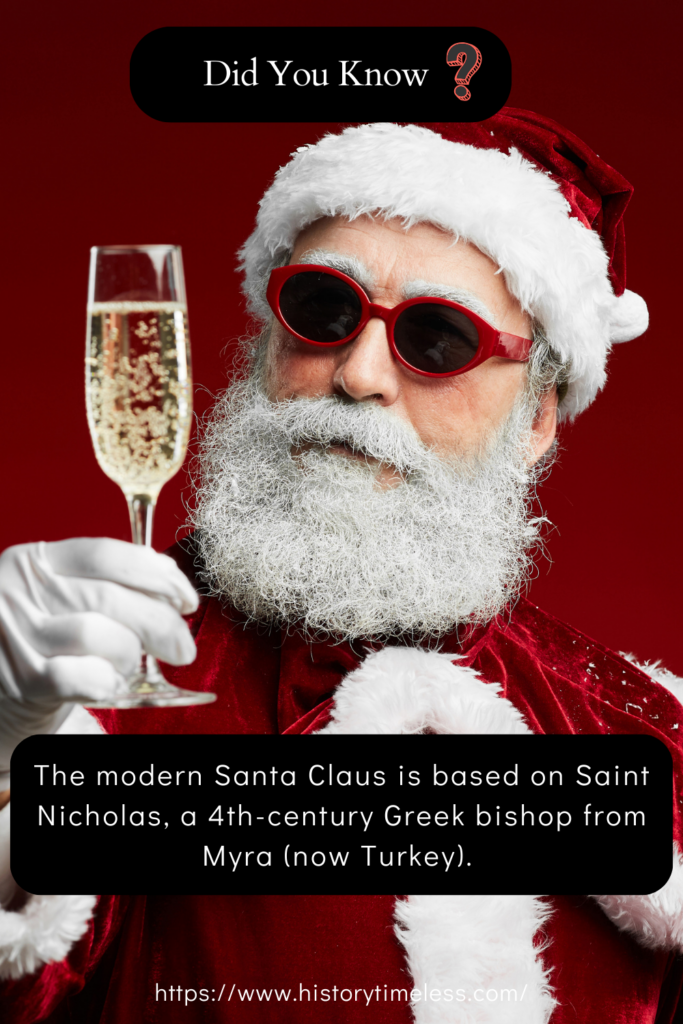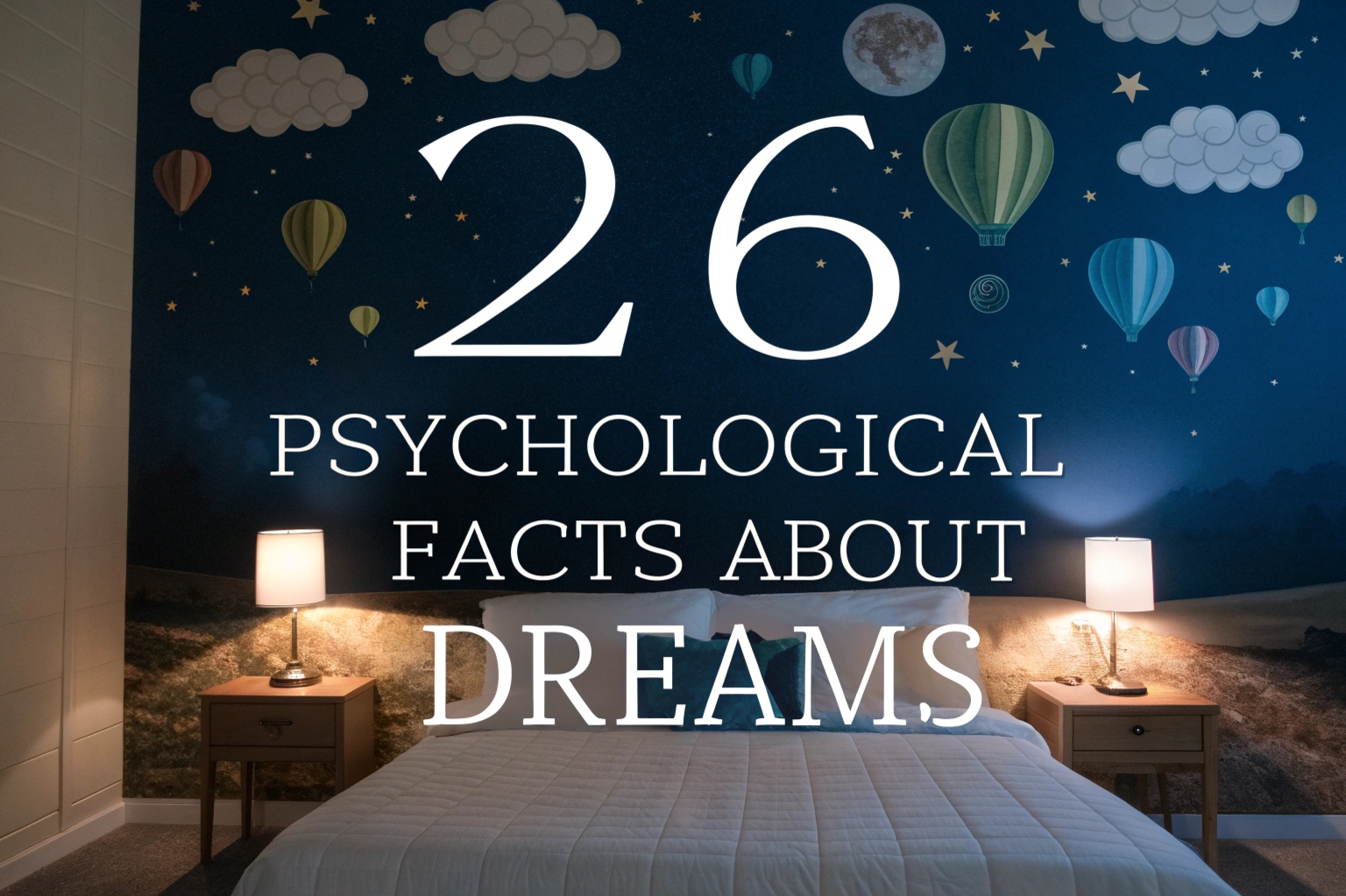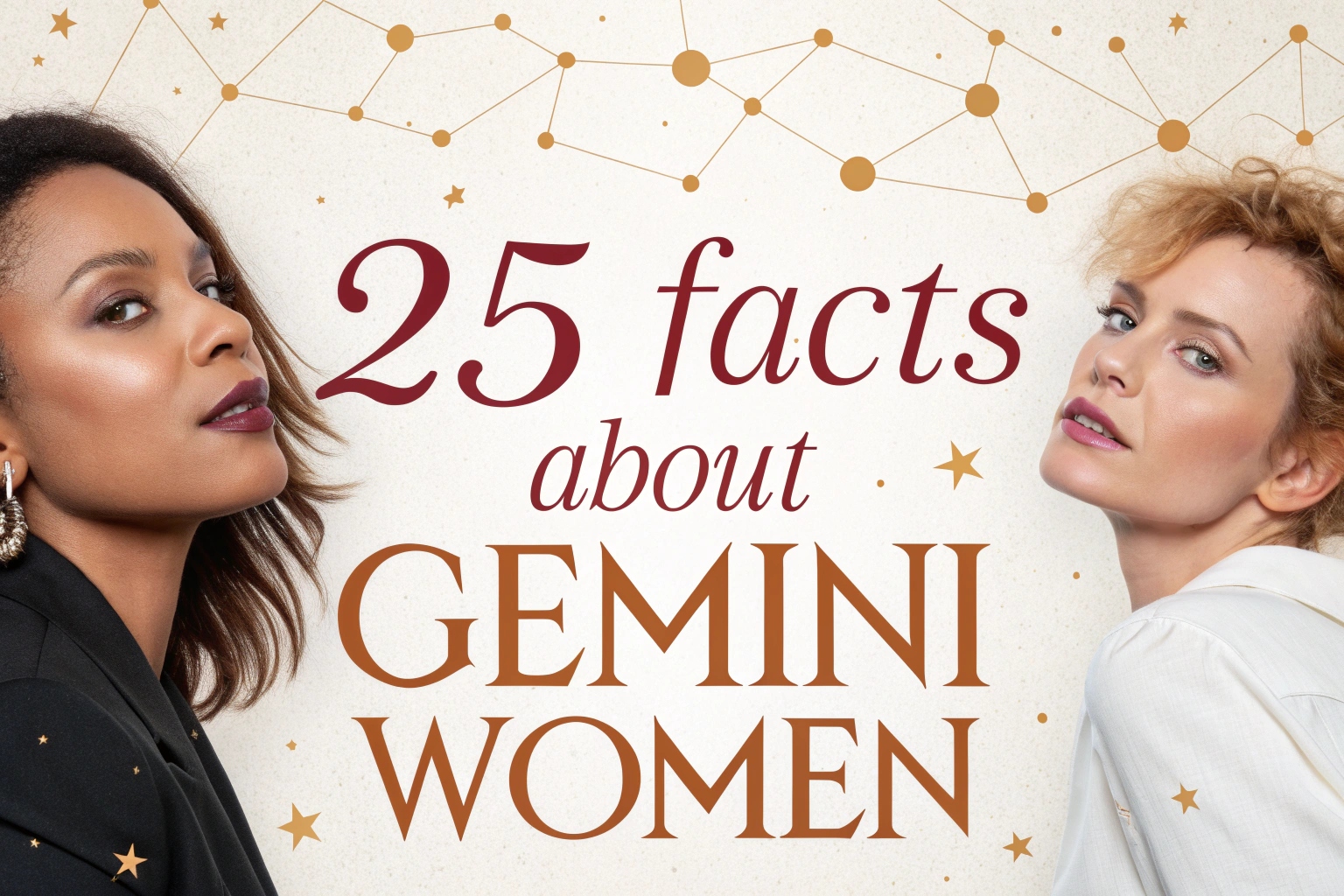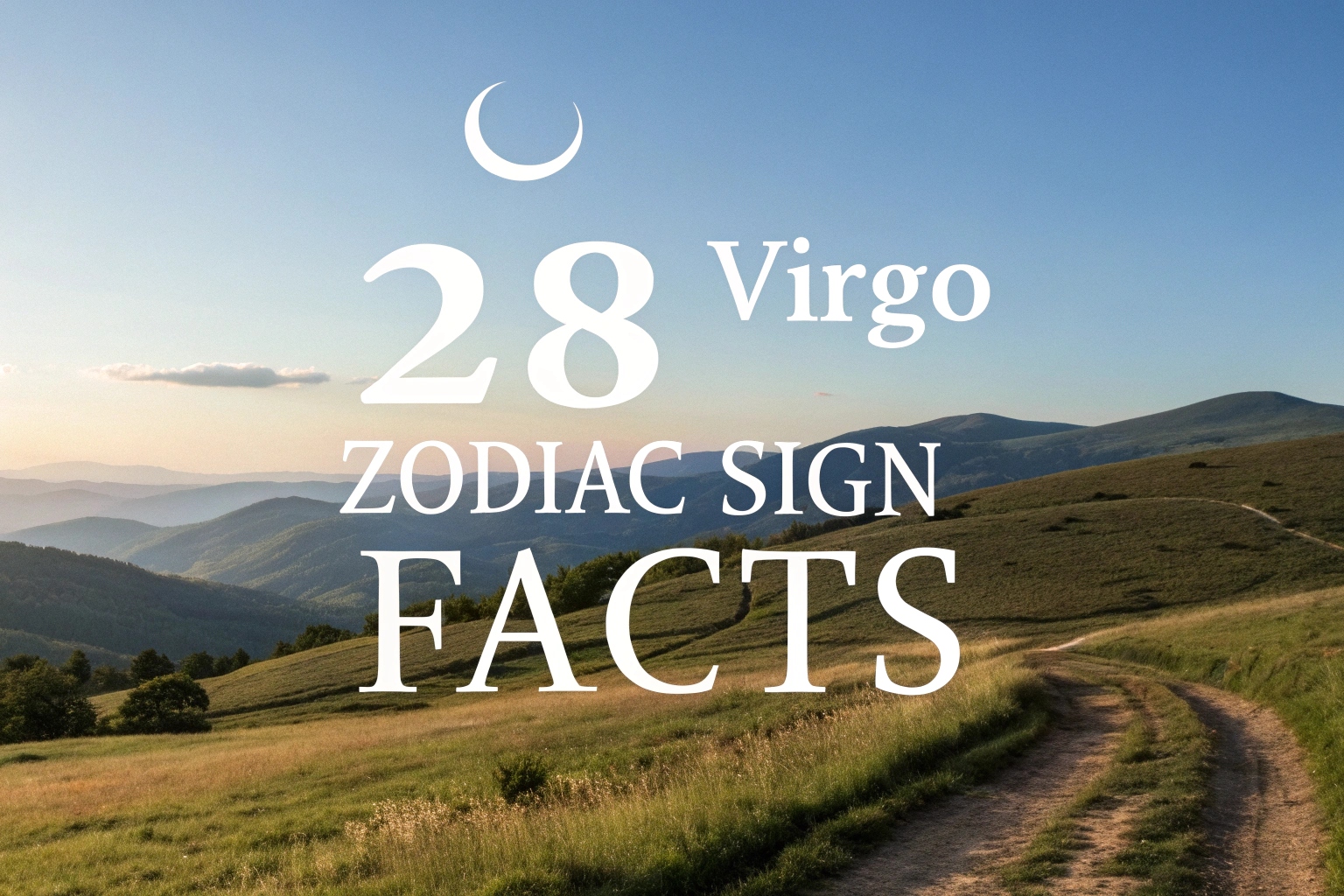Christmas is one of the most beloved holidays worldwide, filled with traditions, festive decorations, and joyful celebrations. While many people know the basics—Santa Claus, Christmas trees, and carols—there are countless fascinating facts behind the holiday’s history and customs.
From surprising origins to unusual traditions, Christmas is full of interesting tidbits that make the season even more magical. Here are seven unique facts about Christmas that might just surprise you!
1. Santa Claus Was Inspired by a Real Person
The modern Santa Claus is based on Saint Nicholas, a 4th-century Greek bishop from Myra (now Turkey). He was known for his generosity, secretly giving gifts to the poor, including placing coins in shoes left outside homes.

Over time, legends about Saint Nicholas spread across Europe, evolving into different versions of the jolly gift-giver.
The Dutch brought their version, “Sinterklaas,” to America, which eventually transformed into Santa Claus. Today, he’s one of the most recognized holiday figures worldwide!
2. Christmas Trees Were First Used in Ancient Germany
The tradition of decorating Christmas trees started in Germany during the 16th century. It’s believed that devout Christians brought evergreen trees into their homes as a symbol of eternal life.
Some historians suggest that Martin Luther, the Protestant reformer, was the first to add candles to a tree, inspired by the twinkling stars in the night sky.
The custom spread to England when Prince Albert, Queen Victoria’s husband, introduced it in the 1840s, and soon after, it became a beloved tradition in many countries.
3. The World’s Tallest Christmas Tree Was Over 200 Feet Tall
The tallest Christmas tree ever recorded was displayed in 1950 at the Northgate Shopping Center in Seattle, Washington. This magnificent Douglas fir stood at an astonishing 221 feet tall!
While most families settle for a tree under 10 feet, many cities still compete to have the most impressive displays.
Rockefeller Center in New York, for example, is famous for its annual Christmas tree, which is typically around 75 feet tall and adorned with thousands of dazzling lights.
4. Jingle Bells Was Originally a Thanksgiving Song
One of the most famous Christmas songs, “Jingle Bells,” wasn’t actually written for Christmas at all! James Lord Pierpont composed it in 1857 under the title “One Horse Open Sleigh” for a Thanksgiving church service.
However, its catchy melody and joyful lyrics made it popular during Christmas, and over time, it became a holiday classic.
Interestingly, “Jingle Bells” was also the first song ever broadcast from space when astronauts on Gemini 6 played it in 1965!
5. The Tradition of Hanging Stockings Comes From a Legend
The custom of hanging stockings by the fireplace has an interesting backstory. According to legend, a poor man with three daughters couldn’t afford their dowries.
Saint Nicholas, known for his kindness, secretly dropped gold coins down their chimney, which landed in the stockings drying by the fire.
This tale led to the tradition of children hanging stockings in hopes of finding gifts inside. Today, stockings are an essential part of Christmas celebrations, often filled with candies, small toys, and treats.
6. Japan Celebrates Christmas With KFC
In Japan, Christmas isn’t a traditional holiday, but a surprising custom has taken hold—eating Kentucky Fried Chicken!
In the 1970s, KFC launched a marketing campaign called “Kentucky for Christmas,” and it became so popular that people now pre-order their Christmas buckets weeks in advance.
While many countries have classic Christmas dinners with turkey or ham, Japan’s festive feast consists of crispy fried chicken, making it one of the most unique Christmas traditions in the world.
7. The NORAD Santa Tracker Started as a Mistake
Each year, millions of children track Santa’s journey across the globe using NORAD’s (North American Aerospace Defense Command) Santa Tracker.
But did you know this tradition started due to a typo? In 1955, a department store accidentally printed the wrong phone number for kids to call Santa, which actually connected to NORAD’s predecessor.
Instead of ignoring the calls, Colonel Harry Shoup and his team played along, giving updates on Santa’s whereabouts. This fun mistake turned into an annual tradition that continues today with satellites and radars tracking Santa’s sleigh in real time!
8. Rudolph the Red-Nosed Reindeer Was Created for a Department Store
Rudolph, the most famous reindeer of all, wasn’t part of traditional Christmas folklore. He was created in 1939 by Robert L. May, a copywriter for Montgomery Ward, a department store.
The company wanted to give children a special holiday storybook, so May wrote the tale of Rudolph, the underdog reindeer with a glowing red nose. The story was a huge success, and in 1949, it was turned into the famous song we all know today.
9. The First Artificial Christmas Trees Were Made of Goose Feathers
Before modern artificial Christmas trees, people in Germany used a rather unusual material—goose feathers! In the late 19th century, Germans created artificial trees using green-dyed feathers attached to wire branches.
This was an early effort to prevent deforestation caused by cutting down real trees. These feather trees eventually made their way to the U.S., and today, artificial Christmas trees come in all shapes, sizes, and even colors—including pink and white!
10. Christmas Used to Be Banned in England and America
It’s hard to imagine Christmas being outlawed, but in the 17th century, the holiday was banned in both England and parts of America!
After the English Civil War, Puritans viewed Christmas celebrations as wasteful and unholy, leading to a ban in 1647.
In colonial America, the holiday was also frowned upon, and in Massachusetts, celebrating Christmas was illegal from 1659 to 1681.
Thankfully, the holiday made a comeback, and today, it’s one of the most widely celebrated festivities in the world.
11. The Largest Christmas Gift Ever Given Was the Statue of Liberty
Gift-giving is a central part of Christmas, but did you know the biggest Christmas present in history was the Statue of Liberty? In 1886, France gifted the U.S. this iconic statue as a symbol of friendship, and it was officially dedicated on October 28 of that year.

While not a traditional Christmas gift, its arrival close to the holiday season makes it one of the grandest presents ever exchanged between nations.
12. Some People Hide a Pickle Ornament in Their Christmas Tree
A quirky and lesser-known tradition involves hiding a pickle-shaped ornament in the Christmas tree. The first child to find the pickle on Christmas morning is said to receive an extra present or good luck for the coming year.
While often thought to be a German tradition, many Germans aren’t familiar with it! Some believe it was actually an American marketing gimmick from the 19th century. Regardless of its origins, the Christmas pickle remains a fun and unique holiday custom.
13. Iceland Has 13 Mischievous Yule Lads Instead of One Santa
While many countries have Santa Claus, Iceland has a more mischievous take on holiday gift-giving—the Yule Lads. These 13 troll-like figures visit children during the 13 nights leading up to Christmas.
Well-behaved kids find small gifts in their shoes, while naughty ones might receive a rotten potato! Each Yule Lad has a unique personality, like Spoon-Licker, Sausage-Swiper, and Door-Slammer.
Iceland’s Christmas folklore is full of playful and eerie traditions, including the terrifying Yule Cat, which supposedly eats people who don’t receive new clothes for Christmas!
14. The World’s Most Expensive Christmas Tree Cost Over $15 Million
While most Christmas trees are decorated with lights, tinsel, and ornaments, one tree in Spain took luxury to a whole new level.
In 2019, a hotel in Marbella unveiled a Christmas tree decorated with diamonds, sapphires, and solid gold ornaments, with a total value of over $15 million!
Designed by British artist Debbie Wingham, this extravagant tree broke records as one of the most expensive Christmas decorations ever created. For comparison, most families spend around $50-$100 on their Christmas trees—quite a difference!
15. The Tradition of Christmas Cards Began in England
The very first Christmas card was created in 1843 by Sir Henry Cole, a British civil servant who wanted a convenient way to send holiday greetings.
He commissioned artist John Callcott Horsley to design a festive illustration with a message of goodwill. The idea quickly gained popularity, and by the late 19th century, Christmas cards became a widespread tradition.
Today, billions of Christmas cards are sent worldwide each year, with digital e-cards also becoming a popular alternative.
16. The Christmas Wreath Symbolizes Eternal Life
Christmas wreaths aren’t just decorative—they hold deep symbolic meaning. The circular shape represents eternity, as it has no beginning or end, while the evergreen leaves signify life even in winter.
Traditionally, red berries were added to represent Christ’s blood, and some wreaths included pinecones to symbolize rebirth.
While many people use wreaths purely for decoration today, their historical meaning remains a beautiful reminder of hope, renewal, and the spirit of the season.
17. Many Cultures Celebrate Christmas on Different Dates
While December 25th is the most recognized date for Christmas celebrations, not everyone follows this tradition. In some Orthodox Christian communities, Christmas is celebrated on January 7th, following the Julian calendar.
Meanwhile, in Scandinavia, Christmas Eve (December 24th) is the main day of celebration, with feasts, gift exchanges, and family gatherings.
In some Latin American countries, “Nochebuena” (Christmas Eve) is the most important night, featuring large feasts and midnight mass. The date may vary, but the festive spirit remains universal.
18. Christmas Crackers Are a British Party Tradition
If you’ve ever attended a British Christmas dinner, you’ve likely seen a Christmas cracker—a festive paper tube that “pops” when pulled apart.
Invented in the 1840s by London confectioner Tom Smith, crackers originally contained sweets, but over time, they evolved to include small toys, jokes, and paper crowns.
The tradition is now a staple of Christmas celebrations in the UK and beyond, adding a fun and noisy element to holiday gatherings.
19. The Song “Silent Night” Stopped a War for a Night
During World War I, on Christmas Eve 1914, British and German soldiers along the Western Front initiated an unofficial ceasefire.
They sang Christmas carols, including the universally known “Silent Night” (“Stille Nacht” in German), and even exchanged small gifts.
This remarkable event, known as the Christmas Truce, demonstrated the power of music and the holiday spirit to bring peace, even in the darkest times. Though brief, it remains one of the most heartwarming moments in war history.
20. Poinsettias Became a Christmas Symbol Thanks to a Legend
Poinsettias, with their bright red leaves, are one of the most recognizable Christmas plants. Their association with Christmas originates from a Mexican legend about a poor girl named Pepita, who had no gift to offer the baby Jesus.
Inspired by an angel, she gathered weeds from the roadside and placed them at the church altar. Miraculously, the weeds bloomed into beautiful red flowers, which became known as “Flores de Noche Buena” (Flowers of the Holy Night). Today, poinsettias are a beloved Christmas decoration worldwide.
21. The Largest Snowman Ever Built Was Over 122 Feet Tall
Christmas and snow often go hand in hand, but one town in Maine took it to the extreme. In 2008, residents of Bethel, Maine, built the world’s tallest snowman (technically a snow-woman), named “Olympia” after their senator.
She stood an astonishing 122 feet tall—about the height of a 10-story building! Complete with giant red lips, eyelashes made from skis, and trees for arms, Olympia broke records as the biggest snow creation in history. Now that’s a true winter wonder!
22. The Yule Log Tradition Dates Back to Viking Times
Before the Yule log became a festive dessert, it was an ancient winter solstice tradition. Vikings and early Europeans would burn a large log in the hearth to celebrate the return of longer days.
It was believed to bring good luck and protect the home from evil spirits. Over time, as fireplaces became smaller, the tradition transformed into the Yule log cake—a delicious chocolate dessert shaped like a wooden log, now a staple in many Christmas celebrations.
23. Santa’s Red Suit Wasn’t Always His Signature Look
Santa Claus is instantly recognizable in his red suit, but he hasn’t always dressed this way. Early depictions showed him in green, blue, and even brown outfits.
The iconic red and white suit became widely popular after Coca-Cola featured Santa in their holiday advertisements in the 1930s.
Though Coca-Cola didn’t invent Santa’s red suit, their marketing helped cement it as the official look of Christmas’s jolliest figure.
24. The First Christmas Movie Was Made Over 100 Years Ago
Christmas movies are a holiday staple, but the very first one dates back to 1898! A British film titled Santa Claus, directed by George Albert Smith, is considered the first Christmas-themed movie.
It was just over a minute long and showed Santa delivering presents to sleeping children. While silent and simple, it laid the foundation for the many beloved holiday films we enjoy today, from It’s a Wonderful Life to Home Alone.
25. A Town in Indiana Is Literally Called Santa Claus
In the U.S., there’s a town where it’s Christmas all year round—Santa Claus, Indiana. Originally called Santa Fe, the town was forced to change its name when the postal service discovered another Santa Fe already existed.
The residents chose “Santa Claus,” and ever since, the town has embraced the holiday spirit. Every year, thousands of children send letters to Santa, and volunteers make sure each one gets a reply. The town even has a Christmas-themed amusement park!
26. Christmas Lights Were Once Considered a Luxury
Today, Christmas lights are everywhere, but in the early 1900s, they were a luxury that only the wealthy could afford. When electric Christmas lights were first introduced by Edward H. Johnson, a colleague of Thomas Edison, they were extremely expensive.
Most families still used candles on their trees, which posed a fire hazard. Over time, as electricity became more widespread and affordable, Christmas lights became a must-have decoration for households worldwide.
27. “We Wish You a Merry Christmas” Was Once a Demand for Pudding
The classic carol We Wish You a Merry Christmas has a surprisingly cheeky origin. In the 16th century, carolers would sing this song to wealthy households in England, demanding figgy pudding—a rich dessert made of dried fruit and spices.
The lyrics “We won’t go until we get some” were quite literal, as carolers would refuse to leave until they were given a treat! Thankfully, modern Christmas carolers are much more polite.
28. The Largest Secret Santa Exchange Had Over 270,000 Participants
Secret Santa is a popular holiday tradition, but one online event took it to the next level. Reddit holds an annual worldwide Secret Santa exchange, and in 2013, it set a Guinness World Record with over 270,000 participants from 188 countries.
Even Bill Gates has joined in, famously sending incredibly thoughtful gifts to his match. This massive gift exchange showcases the spirit of giving and how technology can bring people together during the holiday season.
Unlock more fun and weird facts:
25 Interesting Facts About English Language!
10 Interesting Facts You’ve Never Heard Before!
20+ Insane Facts About Animals That Defy Belief!
15+ Interesting World Facts: Say ‘Wow’ to These Discoveries!





